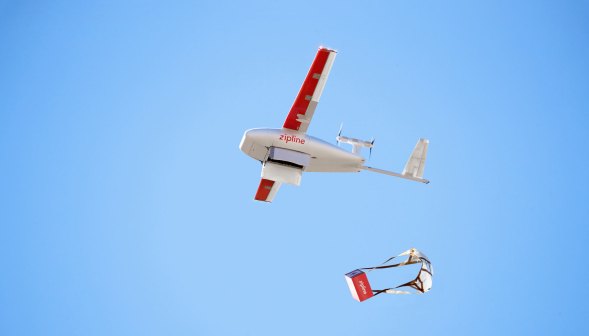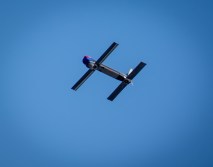As the Federal Aviation Administration conducts tests and reaches out to universities to research the integration of unmanned aircraft systems into the national airspace, commercial and recreational enthusiasts are not waiting for the agency’s 2015 deadline—they’re making sure the industry is ready when that day comes.
Mark Morrisson, the executive director of SOAR Oregon—a not-for-profit economic development organization focusing on drone industry development in Oregon—said the organization is attempting to fill a gap missed by the aviation industry.
According to data released from the Association for Unmanned Vehicle Systems International, within the first three years of UAS integration, the industry could have an economic impact of more than $13.6 billion. By 2025, the organization said that economic impact could grow to more than $80 billion.
With the industry projected to grow so rapidly, Morrisson said it raised the question of where the industry’s projected 70,000 jobs within the first three years would come from.
“We’ve been ignoring curriculum [that could aid in UAS development] that starts at middle school,” Morrisson told FedScoop. “We’re a little late.”
To start the process of remedying the knowledge gap, SOAR Oregon is hosting an aerial robotics innovation day Friday in Bend, Oregon.
The event, sponsored by Intel, kicks off with an invitation-only breakfast for business and education leaders, after which the organization will host a hands-on lab session for kids challenging participants to solve a community problem using aerial robotics.
“Intel is the biggest employer in the state of Oregon,” Nigel Ballard, Intel’s director of federal marketing said. “If we can infuse kids from a young age with robotics, electronics, grabbing out a soldering iron and joining one component to another, I think that will be very good for Intel’s Oregon recruitment down the road.”
Demand for the event has been more than anticipated. According to Morrison, the initial breakfast was supposed to be limited to 50 participants; however, it has since grown to more than 70, and the organization is now having to turn people away. According to a release from SOAR Oregon, more than 200 people have signed up.
The innovation day will end with presentations and demonstrations from the finalists of the national AUVSI Drone Prize Contest, who demonstrated drone uses for agriculture mapping, community safety preparation, law enforcement and bomb detection and prevention.
“[We need UAS investment] as it involves precision agriculture – enabling farmers to be better, more efficient farmers. The UAVs/drones, call them whatever you will, once you’ve seen one of those with a multi-spectral camera go over a field and then 20 minutes later, you’ve got the entire field mapped out—every single plant that’s healthy, which ones are dry and which ones have too much fertilizer or too little—you realize, there’s just no going back,” Ballard said. “The days of walking through a field and grabbing hold of a leaf, that’s just done.”
Despite the fact that drone technology is already implemented and integrated in several places around the globe, Morrisson called drones the United States’ next great industry.
“I don’t think it’s beyond us to leapfrog over the rest of the world [with drone technology] for a variety of reasons,” Morrisson said. “Integration will be the most important thing that the FAA has done to date.”
According to the FAA’s inspector general, the agency is behind schedule to integrate drones into the national airspace. FAA Administrator Michael Huerta told FedScoop last week that although Congress mandated the agency to integrate small UAS into the airspace by 2015, they also mandated the agency do so safely. According to Huerta, the latter concern is more important.
Morrisson, although eager for integration to happen as quickly as possible, sympathized with the agency’s struggles to integrate on time.
“One thing we’re failing to remember is that the FAA is still under sequestration,” Morrisson said. “The money to facilitate integration hasn’t been appropriated. You’ve asked the agency to conduct one of the most important infrastructure tasks since the interstate highway system, yet there’s no money to do the job.”
So as the FAA moves through the process of integration, Morrisson said the innovation day was an opportunity to get interested and excited people, both recreationally and commercially, in the same room to talk about UAVs.
“It’s been the recreationalists crashing drones in Yellowstone, but what we want to do is prepare our community for the potential economic impact that a brand new industry will bring,” Morrisson said. “The conversation should be moving to investments to be made in education and infrastructure.”



